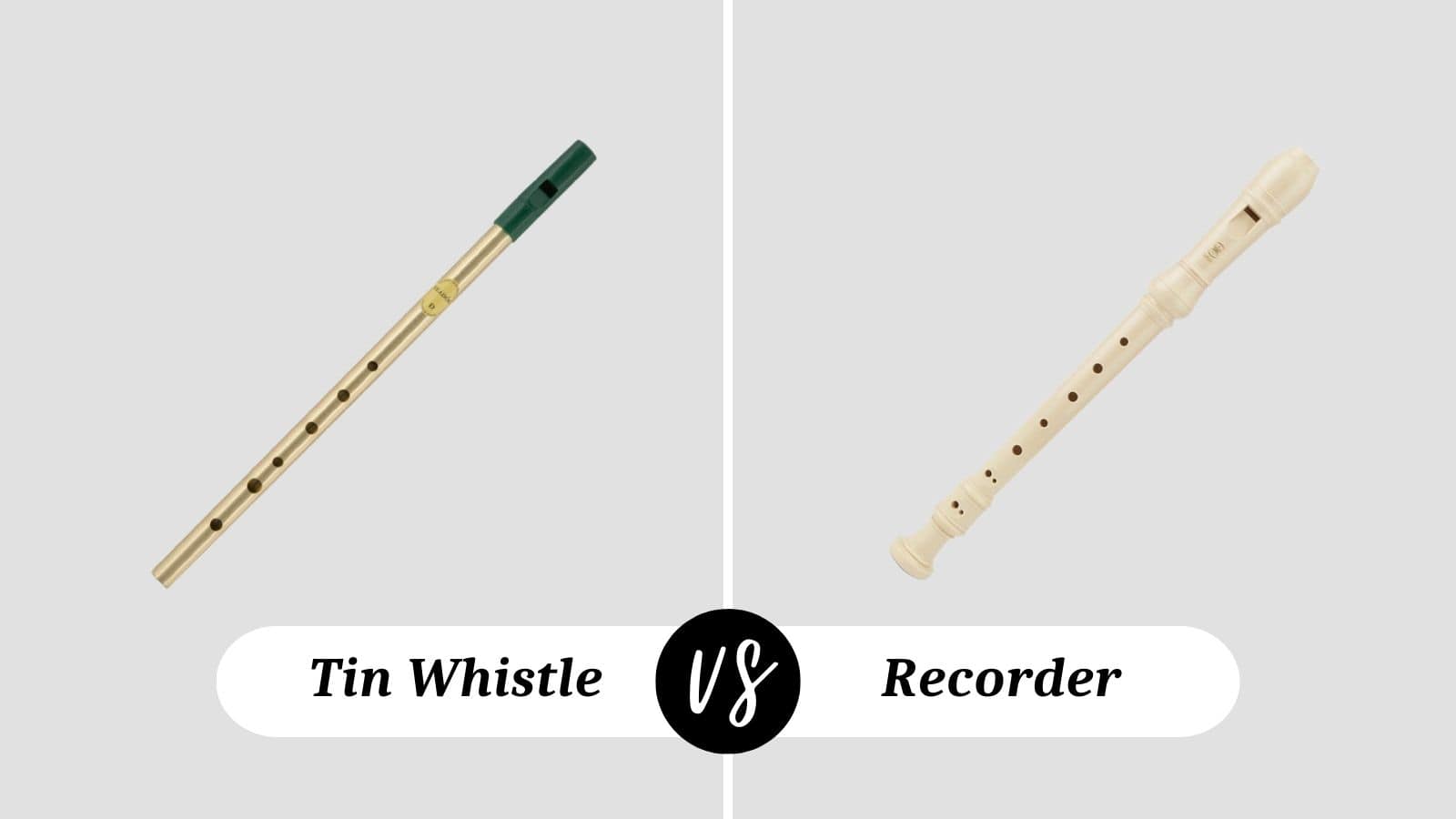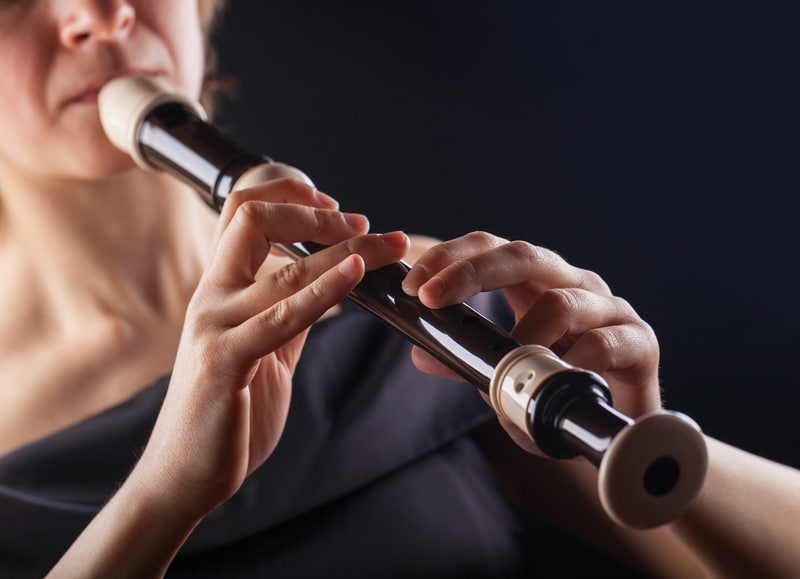
Wind instruments have been an essential part of music-making for centuries. While today, transverse flutes (those held horizontally) are more commonly played by musicians in professional orchestras, end-blown or fipple flutes (those held vertically) are still prominent.
People play them in military bands, Baroque ensembles, traditional music groups, or just for fun. Two such instruments are the recorder and the tin whistle. While these instruments are similar in many ways, they are not the same. Let’s learn about how.
Tin Whistle vs Recorder
What is a tin whistle?
A tin whistle, also referred to as a penny whistle, is a small, vertically-held wind instrument. The term “penny whistle” was coined because the instrument could once be purchased for just a penny.
Though variations of this instrument have been prevalent in nearly all cultures throughout music history, today, it is not always taken seriously. Many people purchase them and treat them like toys due to their high-pitched sound, relative easiness to play, and small size.
They are very simple instruments, consisting of a single narrow tube with a mouthpiece and six finger holes, and are played by blowing into the mouthpiece and covering different combinations of the holes with the fingers.
Tin whistles are diatonic instruments, which means that they cannot naturally produce all twelve chromatic pitches. The key the tin whistle is pitched in dictates the notes that the instrument is capable of playing.
Tin whistles can be pitched in any of the twelve available pitches, but are most often pitched in the key of D. Other common keys include C, F, and G. The instrument will be able to play the notes from the scale of the key it is pitched in, as well as from the scale of a perfect fourth higher.
It will also be able to play in the related natural minor key. For instance, if the tin whistle is pitched in D, it will be able to play in kthe keys of D and G major and B minor.
However, experienced tin whistle players have figured out ways around this limiting set-up. By only partially covering up the holes or using special cross-fingerings, more pitches become available, though it is difficult to do this accurately.
The modern version of the tin whistle can be tied to western Europe, specifically England and Ireland. They are typically made from brass or nickel, though the mouthpieces are often plastic.
Most tin whistles are very inexpensive, but there are handcrafted, luxury versions of these instruments available that can sell for hundreds of dollars.
Other than pure recreation, the tin whistle is most commonly heard today in Celtic music or other traditional music from England, Scotland, and Ireland. It also has been heard in famous movie soundtracks, including those for the Lord of the Rings and Titanic.
The instrument has a somewhat mellow sound and evokes imagery of folk traditions and nature.
What is a recorder?
Most people are familiar with the recorder, a vertically-held wind instrument often taught to young children in schools. The recorder also has a long history, dating all the way back to the Middle Ages.
It played a prominent role in court music and instrumental ensembles until it was largely replaced by the modern transverse flute. However, it still remains important in modern music, as the most commonly played end-blown instrument in the flute family.
Like the tin whistle, it is played by blowing into the mouthpiece and closing or opening the holes in different combinations.
Recorders are chromatic instruments, which means that all twelve chromatic pitches are available to its player; as a result, it can play in any key.
This is largely made possible by the addition of the thumb hole on the recorder that is not present on most other end-blown flutes. Though recorders come in many sizes, the most frequently seen today is the smallest, the soprano recorder.
On this instrument, the lowest note is C5, one octave higher than middle C on a piano. This means the instrument is also pitched one octave higher than a typical modern flute and in the same register as the modern piccolo. Typically the recorder can cover around two octaves in range.
Modern recorders can be made out of different materials. Many are made of plastic; if you were to purchase a student recorder off the internet, this is typically what you would receive.
However, there are plenty of recorders that are still made from wood. Recorders are often used today in Baroque and Renaissance period ensembles, which strive to play the music from those periods on the instruments it was written for.
Though its popularity declined with the rise of the modern flute, some more modern composers, such as Berio and Hindemith, still wrote music for recorder due to its unique sound.
Most people associate the recorder with a pure, sweet sound, although at times it can be piercing. The recorder is typically much easier to produce sound on than a modern flute, but more difficult to play complex technique on, which is one of the reasons it is typically not included in the modern orchestra.
How are they different?
Clearly, these two instruments have many things in common: they are both end-blown, vertically-held instruments with similar mouth-pieces and finger holes. Both are generally inexpensive to purchase and easy to learn basic fingerings and sound production on.
But they serve very different purposes and have important distinctions. The tin whistle is much smaller than the recorder and, due to its lack of a thumb hole, is much more limited in pitch options.
Tin whistles are typically given to children as toys, whereas recorders are often used as starter instruments for children in school. Finally, while the tin whistle appears mostly in traditional music from western Europe, the recorder is more prominent in period music ensembles.
If you’re looking to learn to read music on an easy-to-teach-yourself instrument, check out the recorder. If you’re looking to play a certain soundtrack you love or specific traditional music, the tin whistle might be a better choice. Either way, you’ll be sure to have fun!


